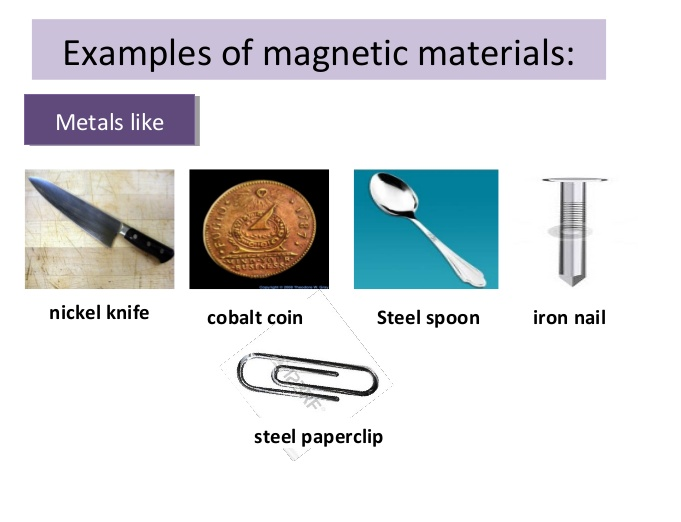For any material, magnetism is decided by the orbital and spin motion of the electrons and the orientation of electrons. The classification of magnetic materials is based on the behaviour of these materials when they are in the magnetic field.
Based on this classification, following are the five major types of magnetic materials:
- Diamagnetic material
- Paramagnetic material
- Ferromagnetic material
- Antiferromagnetic material
- Ferrimagnetic material
In the above-mentioned classification of magnetic materials, there are metals that are having magnetic properties. So which metals are magnetic? The answer to this question is that iron, nickel, alloys of rare-earth metals, and cobalt.
Diamagnetic material
Diamagnetic materials have a property known as diamagnetism which makes a weak contribution to the material’s response to the magnetic field. Diamagnetic materials have no angular momenta. There are diamagnetic materials with magnetic susceptibility values that are close to zero.
Paramagnetic material
When the material is placed in a weakly magnetized place with an external magnetic field which is in the same direction as that of the applied field, these materials are known as paramagnetic materials. These materials have a property which is known as paramagnetism.
Ferromagnetic material
These materials have a magnetic dipole moment that contributes to the magnetic spin. Ferromagnetism is a special case of paramagnetism.
Summary of magnetic materials
| Type | Example | Magnetic behaviour |
| Diamagnetic material | Non-metallic elements, inert gases, and diatomic molecules are the examples | There is no magnetic moment in the atoms |
| Paramagnetic material | Ions of transition metals and rare earth metals are the examples | The magnetic moment of these materials are oriented randomly |
| Ferromagnetic material | Alloys of ferromagnetic elements are the examples | The alignment of the magnetic moment is parallel |
| Antiferromagnetic material | Examples of these materials are the transition metals | The alignment of the magnetic moments are anti-parallel |
| Ferrimagnetism | Mixed oxides of iron are the examples | The orientation of the magnetic moments are mixed parallel and anti-parallel |
Interested to learn more about other Physics concepts, stay tuned with BYJU’S or subscribe to our YouTube page. Below is the YouTube link for magnetic effects of electric current:

